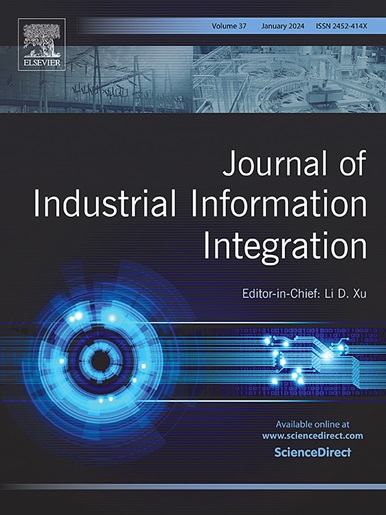Graph reinforcement learning based dynamic scheduling for human-machine symbiosis manufacturing considering multi-type disturbance events
IF 10.4
1区 计算机科学
Q1 COMPUTER SCIENCE, INTERDISCIPLINARY APPLICATIONS
引用次数: 0
Abstract
Human-machine symbiosis manufacturing (HMSM) is widely used in aviation, aerospace, and marine industries due to its powerful production capacity. However, lots of manufacturing resources and multi-type disturbance events bring high complexity and strong uncertainty, which makes scheduling difficult. Meanwhile, deep reinforcement learning (DRL) is a promising information-driven decision-making technology. Therefore, this paper proposes a novel graph reinforcement learning method for the dynamic scheduling problem of HMSM. Specifically, a Markov decision process is established, in which the environment transition mechanism uses four key time points to solve the rarely studied constraints: calendar, normal commuting, and three-shifts. Then, a novel hierarchical aggregation graph neural network is designed, in which the subgraph cutting technology based on node type reduces the difficulty of graph calculation, and an aggregation architecture based on subgraph importance and attention mechanism is designed to achieve effective fusion of heterogeneous node information. Finally, a DRL algorithm with end-to-end action space is proposed, and a response mechanism for nine disturbance events is designed based on the state-action decision-making logic of DRL. Experimental results show that the proposed method outperforms scheduling rule, genetic programming, and two popular DRL methods, and can maintain stable production under uncertain environments.
考虑多干扰事件的基于图强化学习的人机共生制造动态调度
人机共生制造(HMSM)以其强大的生产能力在航空、航天、海洋等领域得到广泛应用。然而,由于制造资源多、干扰事件类型多,生产调度复杂性高、不确定性强,给生产调度带来了困难。同时,深度强化学习(DRL)是一种很有前途的信息驱动决策技术。因此,本文提出了一种新的图强化学习方法来解决hmm的动态调度问题。具体而言,建立了一个马尔可夫决策过程,其中环境转移机制使用四个关键时间点来解决很少研究的约束:日历、正常通勤和三班倒。然后,设计了一种新的分层聚合图神经网络,其中基于节点类型的子图切割技术降低了图的计算难度,并设计了基于子图重要性和关注机制的聚合体系结构,实现了异构节点信息的有效融合。最后,提出了具有端到端动作空间的DRL算法,并基于DRL的状态-动作决策逻辑设计了9个干扰事件的响应机制。实验结果表明,该方法优于调度规则、遗传规划和两种流行的DRL方法,能够在不确定环境下保持稳定生产。
本文章由计算机程序翻译,如有差异,请以英文原文为准。
求助全文
约1分钟内获得全文
求助全文
来源期刊

Journal of Industrial Information Integration
Decision Sciences-Information Systems and Management
CiteScore
22.30
自引率
13.40%
发文量
100
期刊介绍:
The Journal of Industrial Information Integration focuses on the industry's transition towards industrial integration and informatization, covering not only hardware and software but also information integration. It serves as a platform for promoting advances in industrial information integration, addressing challenges, issues, and solutions in an interdisciplinary forum for researchers, practitioners, and policy makers.
The Journal of Industrial Information Integration welcomes papers on foundational, technical, and practical aspects of industrial information integration, emphasizing the complex and cross-disciplinary topics that arise in industrial integration. Techniques from mathematical science, computer science, computer engineering, electrical and electronic engineering, manufacturing engineering, and engineering management are crucial in this context.
 求助内容:
求助内容: 应助结果提醒方式:
应助结果提醒方式:


